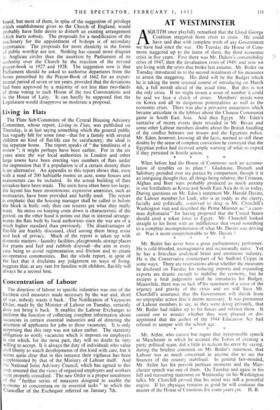Living in Flats
The Flats Sub-Committee of the Central Housing Advisory Committee, whose report, Living in Flats, was published on Thursday, is at last saying something which the general public has vaguely felt for some time—that for a family with several children no kind of flat-life can be satisfactory; the ideal is the separate home. The report speaks of " the timeliness of a review "; it might perhaps have been earlier. For in the six years since the war local authorities in London and other large towns have been erecting vast numbers of flats under the impression that if a population is of a certain density there is no alternative. An appendix to this report shows that, even with a need of 200 habitable rooms an acre, some houses and maisonettes can be included. In the actual building of flats mistakes have been made. The units have often been too large; the layout has been monotonous; expensive amenities, such as mortuaries, have been provided and hardly used. The report is emphatic that the housing manager shall be called in before the block is built; only thus can tenants get what they really want. Its stress on keeping costs down is characteristic of the period; on the other hand it points out that in internal arrange- ments the flats built by local authorities since the war are of a much higher standard than previously. The disadvantages of flat-life are frankly discussed, chief among them being noise and lack of privacy. Much of the report is taken up with domestic matters—laundry facilities, playgrounds, storage places for prams and fuel and rubbish disposal—the aim in every case being to avoid regimentation and friction and to create co-operative communities. But the whole report, in spite of the fact that it disclaims any judgement on ways of living, suggests that, at any rate for families with children, flat-life will always be a second best.


































 Previous page
Previous page